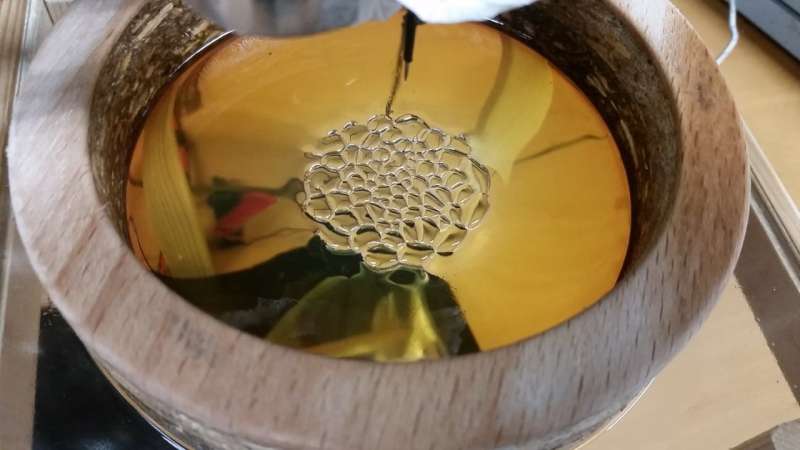An investigation of the Rose window instability

Royal Society Open Science recently published "The Electric Honeycomb; an investigation of the Rose window instability" with a single author, Muhammad Shaeer Niazi. Nothing unusual in that, you might think, but Muhammad is 17 years old, and this is his first published manuscript. His work has generated a lot of attention both for breaking new scientific ground and his relative youth, we were delighted when Muhammad was willing to answer a few questions about his research.
You are relatively young to be a published scientist, what inspired you to prepare a research paper?
I performed this research as a member of team Pakistan for the International Young Physicists Tournament 2016, held in Russia. It was one of my goals, and also my parents' dream, for me to have a paper published before I turned 17. So I furthered the research at home and compiled it into paper form. Also, it is better to have research you have spent 6 months working on published, rather than archived in some computer file. Having a paper published at this age has given me great experience in how a paper is written, reviewed and published. This taste of professional science will surely help me in the long-term.
What is your paper about?
My paper is on an electrohydrodynamic instability called the Rose Window Instability. A stream of energetic ions are produced at a needle electrode through which high voltage is crossed. Underneath the needle is a ground plate electrode on which lies a layer of oil. The ions bombard the surface of the oil and cause a space charge to form. This space charge applies an electrical pressure on the oil surface which, at a certain critical point, pushes the oil out of the way and allows the ions to ground. Everything in the universe wants to be stable and at equilibrium, and the oil develops a honeycomb shaped pattern on its surface to minimize pressure and maximize ion grounding (increasing stability). My paper brings forward a new aspect of thermal gradients in the honeycomb pattern, and records the ion stream using Schlieren photography.
Why are you interested in researching this topic?
I chose this topic to research on as it was a very little known phenomenon, with only 4 or 5 papers detailing it since 1997. I felt that it needed greater exposure and more explanation. I also had an interest in phenomena related to or caused by high voltage, as I had a spare high voltage supply lying around and did not find anything else to do with it other than watch the arcing and smell the ozone, though I took plenty of safety precautions when using the high voltage supply!
Your work has generated a lot of media interest, why do you think this is? How are you dealing with your new-found fame?
My work has received media attention mainly because of my age and how I performed this task on my own using limited resources. Further, this phenomenon is relatively understudied. I don't think this fame is getting to my head though, in fact it is encouraging me to pursue my goal of doing something great in future like winning a Nobel Prize. This fame has also put a lot of responsibility on me and I feel I have to work hard to live up to these expectations. I really thank all the media for highlighting and encouraging my work, and I want to tell them it really makes me want to do more.
How do you see your research and your career developing in future?
The electric honeycomb in particular is something that will probably have a lot of prospects in the science of the future. I believe there is still a lot to be discovered, and to be understood about it. I will continue my dream and passion to become a physicist, and hopefully publish a few more papers before entering university. I aspire to bring a great breakthrough in science, researching on topics which have not been –looked at before, and researching the unexplained. The more complex the topic, the more it excites me – the less known about it, the better.
What would you say to other young researchers thinking of submitting their work to a research journal like Royal Society Open Science?
I just want all the researchers to have faith in their work. They should never get discouraged if their paper is rejected, in fact they should take it as an opportunity to improve their paper. Secondly, age is just a number. Never let your age define what you can and what you cannot do. Always believe in your research, do not let it lie archived in a computer file. It does not hurt to try out submitting a research paper. Patience is key, it's a long process to get something published, do not lose hope.
More information: Muhammad Shaheer Niazi. The Electric Honeycomb; an investigation of the Rose window instability, Royal Society Open Science (2017). DOI: 10.1098/rsos.170503
Journal information: Royal Society Open Science
Provided by The Royal Society




















